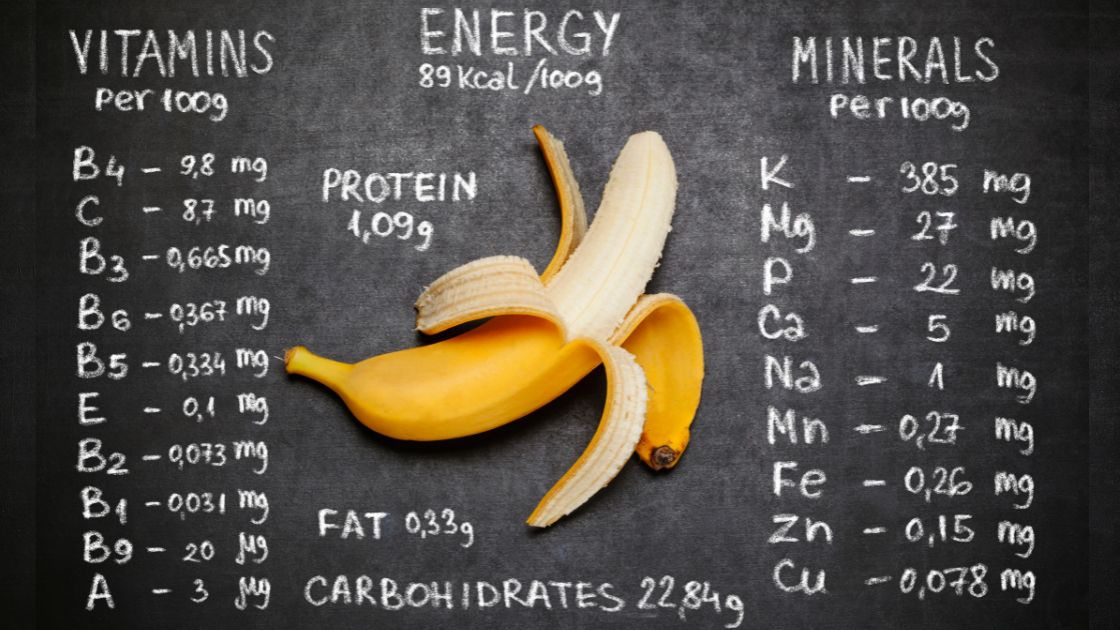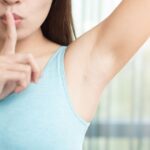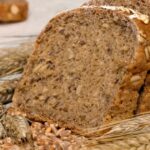- It is a versatile and convenient source of energy, nutrition, and flavor that can be enjoyed by people of all ages
- It is not actually fruit from a tree but rather emerges from a great herb with large leaves
- It is rich in potassium and magnesium, which are essential minerals for maintaining heart health and controlling blood pressure
- It is full of antioxidants, such as flavonoids and amines, which have been linked to a decreased risk of heart disease and degenerative diseases
- It is a good source of soluble fiber and resistant starch, which can help aid weight loss, improve kidney health, and control blood sugar levels
Bananas are a source of energy, nutrition, and flavor that you can take right into your mouth.
It’s easy consumption without previous preparation makes it one of the favorite fruits for many.
That is why children, athletes, older adults, and even animals love bananas.
Also, you can add them to multiple preparations.
They are not only delicious, but by consuming them, you will be boosting your body.
Read on and learn a little about its history, health benefits, and various ways to eat it.
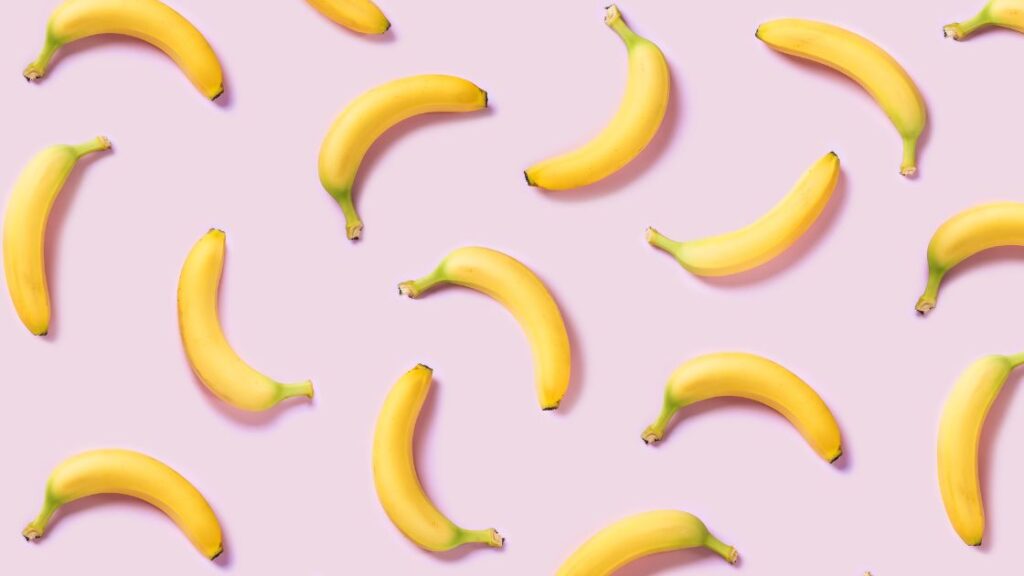
Physical description
Bananas do not come from trees; they come from great herbs.
These plants emerge from the root, are basal, and lack woody texture.
They have a diameter of approximately 30 centimeters and can reach heights of up to 7 meters.
This plant has one of the largest leaves in the plant kingdom.
They have a circular base and are smooth, tender, and longer than they are wide.
The upper side of the plantain leaves is slightly lighter and has a brighter green color.
They reach a length of 3 meters and a width of 90 cm and are arranged in a spiral pattern.
Their flowers
A beautiful purple bud emerges when the pseudostem appears and when the plant already has about 30 open leaves.
Spikes with an axial stem and multiple rows of whorled flowers are seen when the bud opens.
The flowers are protected by purple bracts surrounding them.
These grow, and the bracts disappear over about 30 days.
The fruit
From each female flower will grow a banana.
The fruits fully mature in an average of 180 days.
Each spike has a production capacity of 300 to 400 fruits and can weigh up to 50 kg.
The banana is shaped like a berry covered by a peel and can vary in length from 7 to 30 centimeters.
The skin of the fruit is green while immature and develops a deep yellow color when ripe.
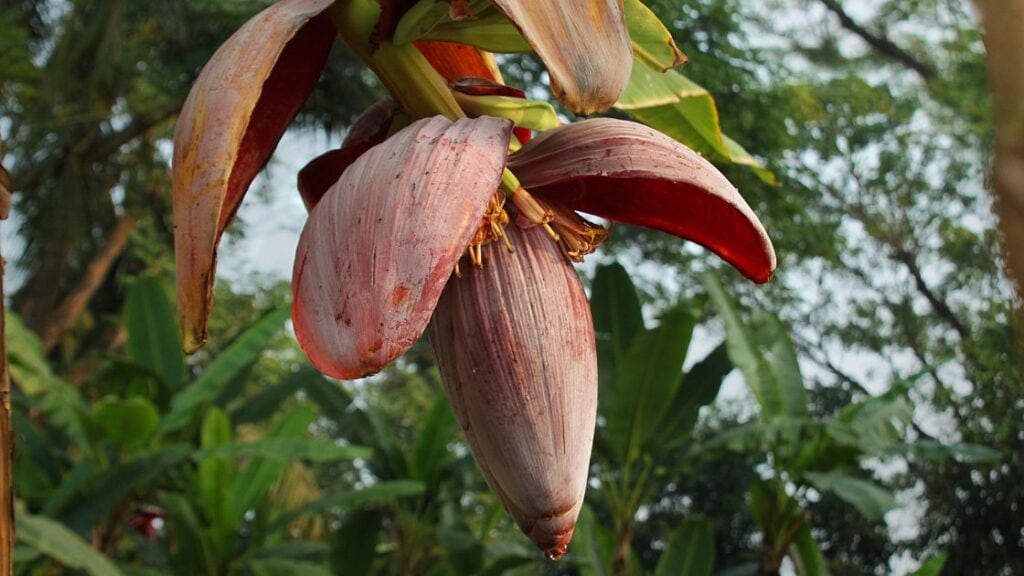
This fruit has a cylindrical, linear, or slightly curved shape.
The pulp is uniformly white or yellowish, smooth, and compact.
History and production
All Latin American and Arab countries have consumed bananas since ancient times.
But Southeast Asia is believed to be where bananas were first grown.
These fruits were brought from the Canary Islands to the New World shortly after the discovery of America.
They were first planted on Hispaniola and quickly spread to other islands and the mainland.
Banana cultivation has developed to the point of becoming a staple food in many areas.
It was in the 19th century that they began to appear in American markets.
Cavendish bananas represent the most popular type imported by non-tropical nations.
This, even though banana variations account for more than 85% of all banana cultivation worldwide.
Banana plants naturally flourish in humid tropical climates with deep, loose, and draining soil.
In semi-arid areas, such as southern Jamaica, they can also be grown effectively under irrigation.
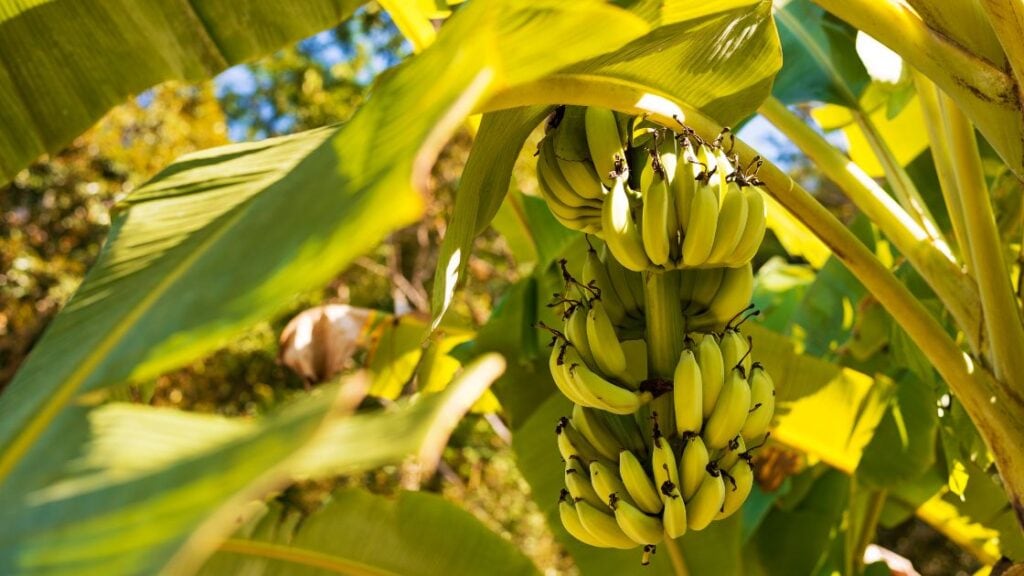
Fruit production continues to be quite consistent following the first crop, which takes 10 to 15 months to reach maturity.
Rhizome divisions and suckers are used as planting material.
To remove excess growth and avoid crowding on a banana plantation, frequent pruning is necessary.
Desirable commercial bunch bananas often have nine hands or more.
On a single acre of land, 300 or more bunches can be produced annually.
Bananas are removed from the plant before they are fully ripe.
The level of maturity that must be obtained before harvesting for export varies.
This will depend on the method of transport used and the distance from the market.
Now, do you want to know the bananas’ nutrients?
You already know a little about its characteristics, history, and cultivation process.
Now meet all the nutrients that this wonderful fruit can offer us.
Nutrition facts about bananas
118 g, or one medium-sized banana, contains:
- 105 Calories
- 1.2mg of Sodium
- 0.4g of Fat
- 3.1g of Fiber
- 27g of Carbohydrates
- 1.3g of Protein
- 14.4g of Sugars
- 10.3mg of Vitamin C
- 422mg of Potassium
- 31.9mg of Magnesium
As you can see, the calories in bananas are very few.
So, if you feel a little hungry in the middle of the day, you can eat a banana without regret.
You will be contributing all these nutrients to your body and allowing it to get the following benefits:
Health Benefits of Bananas
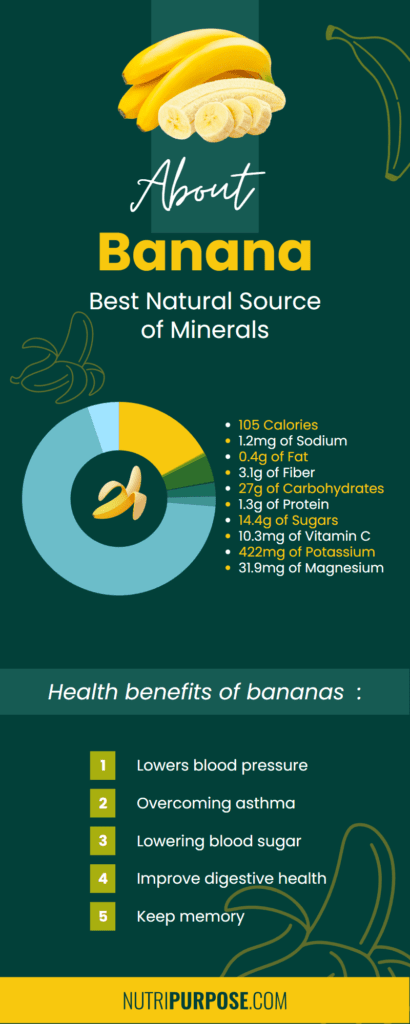
Aid weight loss
The effects of bananas on weight loss have not been formally studied.
However, this well-known fruit has several qualities that could make it a healthy food for weight loss.
First of all, a banana is low in calories.
Although a medium banana has just over 100 calories, it is nutritious and filling.
In any diet to lose weight, the consumption of foods rich in fiber is recommended.
Within these foods, we can include bananas.
Green bananas are also a good source of resistant starch, which has a satiating and hunger-reducing effect.
For athletes, the banana is one of their favorite fruits because of its great contribution to energy with few calories.
So Samantha Bond is right when she says:
“I always have bananas with me for energy.”
Try eating green bananas if you want to add fiber and nutrients to your diet while losing weight.
Support heart health
A key mineral for maintaining heart function and controlling blood pressure is potassium.
Few people get enough potassium in their diets, despite how important it is.
Bananas are rich in potassium.
With a medium-sized banana (126 grams), we will obtain 10% of the daily value.
Potassium also helps lower blood pressure.
Studies have found that people who consume enough potassium have a 27% lower risk of heart disease.
But we not only find potassium in bananas; they are also rich in magnesium.
By eating a banana, we will get 8% of the daily value of magnesium.
This mineral is crucial for heart health.
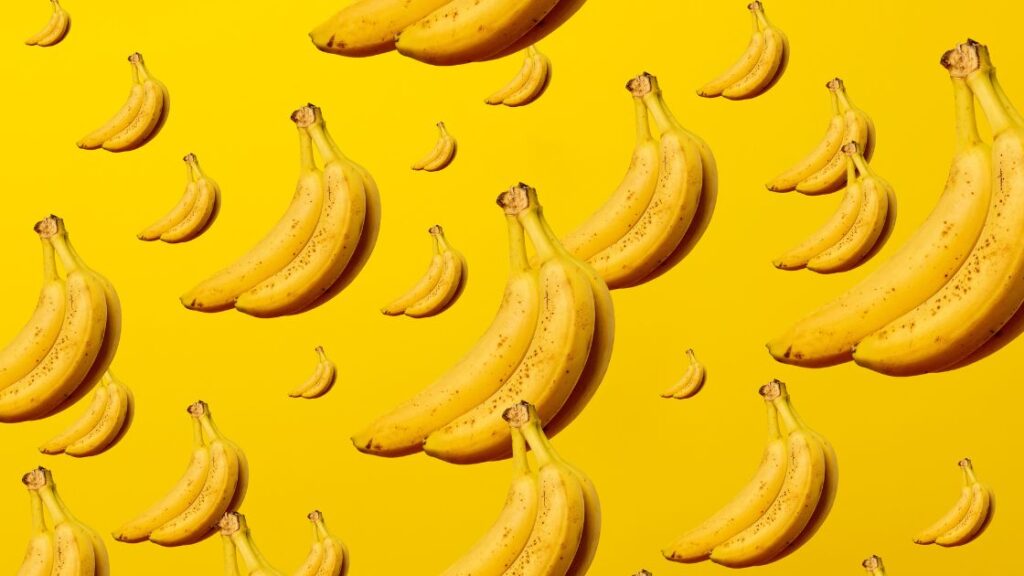
For a person deficient in magnesium, the risk of heart disease, high blood pressure, and elevated levels of fat in the blood is elevated.
That is why it is essential to take this mineral either directly when consuming it from food or with supplements.
Full of antioxidants
Bananas are just one example of how fruits and vegetables are excellent providers of antioxidants in the diet.
This fruit includes a variety of important antioxidants like flavonoids and amines.
These antioxidants have been linked to many health benefits.
Benefits include a decreased risk of heart disease and degenerative diseases.
In addition, they help prevent oxidative cell damage induced by free radicals.
Without antioxidants, free radicals can accumulate over time and become harmful.
Improve kidney health
Potassium is necessary for normal blood pressure and optimal kidney function.
Bananas, which are excellent dietary sources of potassium, may be especially helpful in maintaining kidney health.
An investigation of people with chronic kidney disease found a correlation between potassium and a slower progression of the condition.
On the other hand, certain people with advanced kidney disease or dialysis patients need to limit their potassium intake.
Before increasing your potassium intake, check with your medical team if you fit one of these descriptions.
Improve blood sugar levels
Bananas have a lot of soluble fiber.
Soluble fiber turns into a gel when it dissolves in liquid during digestion.
Soluble fiber is responsible for the spongy feeling in bananas.
This fruit also contains resistant starch that the body cannot digest.
These two forms of fiber can help control blood sugar levels after meals.
Also, by delaying stomach emptying, they can help control hunger.
Although they contain more carbohydrates, bananas do not significantly raise blood sugar levels in healthy people.
People with diabetes can enjoy bananas, but eating too many at once is not recommended.
Easy to add to your diet
Bananas are not only one of the most convenient snacks available, but they are also very healthy.
They pair wonderfully with yogurt, cereal, and smoothies.
They taste wonderful when paired with whole wheat bread spread with peanut butter.
They can also be substituted for sugar in baking and cooking.
Also, eating and transporting bananas are easy.
They are usually easily digestible and well tolerated.
You just have to peel them off and go.
Look at the following recipes so that you have some ideas about how to eat bananas.
Delectable Recipes to Eat Bananas
Banana Cupcakes
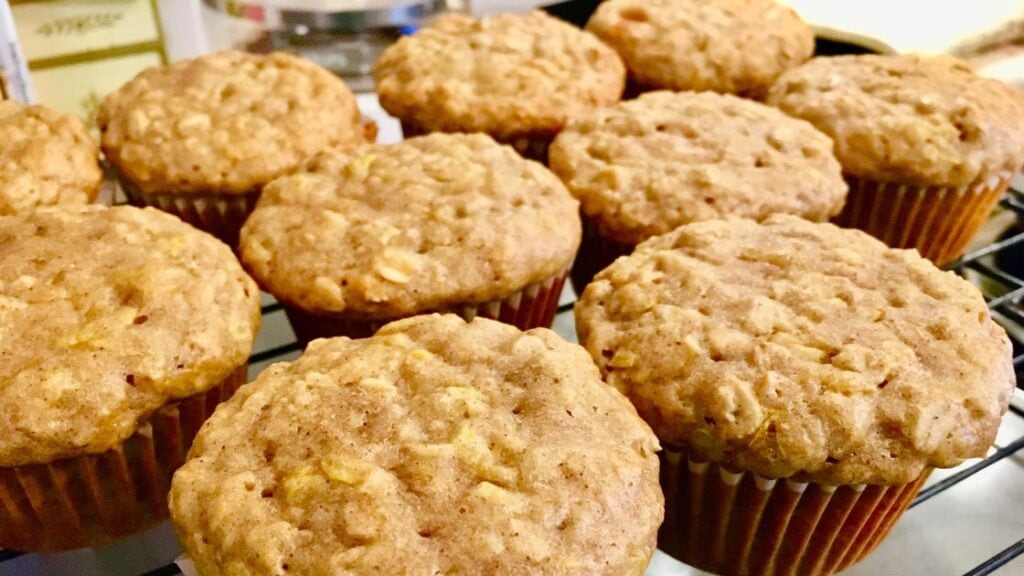
Preparation time: 85 minutes
Surrender for: 4 people.
Ingredients for the cupcake:
- 200 gr. of flour
- 60 gr. of butter
- 1 tablespoon yeast
- 1 egg
- 1 ripen banana in a mash
- 100 gr. of sugar
Ingredients for the coverage:
- 2 bananas
- 300 ml. milk
- 100 gr. of butter
- 150 gr. icing sugar
Procedure:
- Turn on the oven so that it heats up and down to 180 °C. So you will have it ready to put the cupcakes in.
- Sift the flour into a bowl, along with the yeast and salt.
- In another bowl, you are going to beat the egg with the sugar to get a white mixture. Then add the butter, at room temperature, and beat again.
- Now you will beat the egg mixture again, but with the banana puree.
- Add the flour without stopping the beating until a smooth cream is formed.
- The cream is going to be poured into the cupcake molds. Later, put it in the oven to bake for a quarter of an hour, or about twenty minutes.
- You will take them out when you prick them with a fork or with some chopsticks and they come out clean.
- To make the coverage, you only have to mix the butter with the icing sugar in a bowl. Mix until you make a cream with the milk.
- Chop the bananas, mash them well, and mix them with the milk to get cream. You can let it rest a bit in the fridge if you wish.
- Take the cupcakes out of the oven. Fill the piping bag and pour the mixture over the cupcakes.
Tips and recommendations:
As an ornament, you can put a slice of banana on top if you wish.
Banana smoothie
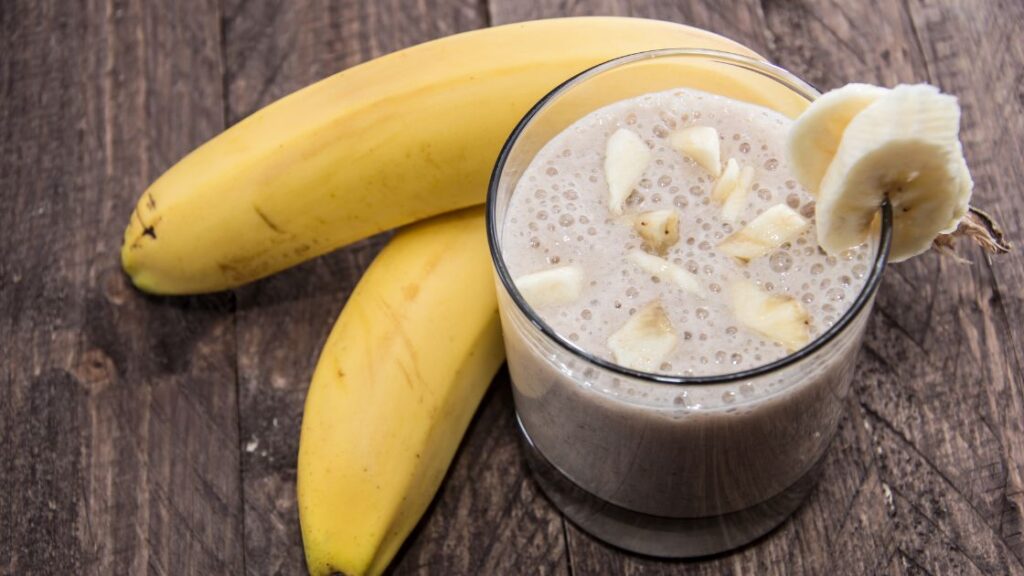
Preparation time: 15 minutes
Surrender for: 4 people.
Ingredients:
- 3 ripe bananas
- 250 ml. greek yogurt
- 250 ml. skimmed milk
- 15 gr. brown sugar or honey (optional)
- 1 teaspoon vanilla extract
Procedure:
- You are going to start by peeling the bananas and cutting them into small pieces. Put it in a bowl and freeze it.
- Blend the frozen bananas with milk, yogurt, vanilla, and sugar. Do it for several minutes at high speed.
- When all the ingredients are completely crushed and you have obtained a creamy texture, your smoothie will be ready.
Tips and recommendations:
- If you are not going to use frozen fruit, you should add a little ice to the drink.
- If you are lactose intolerant, you can replace the milk with soy or almond milk. Same with yogurt.
- You can also add some rolled oats and chia. This will increase the protein and vitamin content of your drink.
Bananas pancakes:

Preparation time: 30 minutes
Surrender for: 4 people.
Ingredients:
- 3 eggs
- 2 bananas
- 100 gr. of oats
- 50 grams of strawberries
- 20 gr. of blackberries
- 1 tablespoon of salt
- Whipped cream
Procedure:
- The first thing we are going to do is peel the bananas. Put them in a bowl and mash them with the help of a fork. Add the three eggs and mix everything.
- Next, add the tablespoon of salt and the oatmeal powder. Mix everything again with the fork.
- Throw in the blackberries, move the mix carefully, and put a pan on the fire.
- Take a tablespoon and, as soon as the pan is hot, add it slowly. Let it be done first on one side and then on the other. Repeat this process until you finish all the dough.
- While they are cooking, wash and cut the strawberries.
- As soon as the pancakes are done, top them with the strawberries and cream, and they are ready to serve.
Tips and recommendations:
If you prefer, instead of adding berries, you can use chocolate chips or even peanut butter. You can prepare these pancakes however you like.
There are multiple recipes where you can include bananas. In particular, I love banana-based desserts and ice cream. That’s why I understand Sissy Spacek when he says:
“Banana Splits for Breakfast. I think I ate about five.”
Enjoy Bananas
There are endless options for eating and preparing bananas.
You just have to use your imagination and combine the flavors that you like the most.
The important thing is that by eating bananas, you will be providing valuable nutrients to your body.
So, enjoy them.
Bananas are also the best fruits because they are non-acidic.
We have more lists of nonacidic fruits; you can check them out.
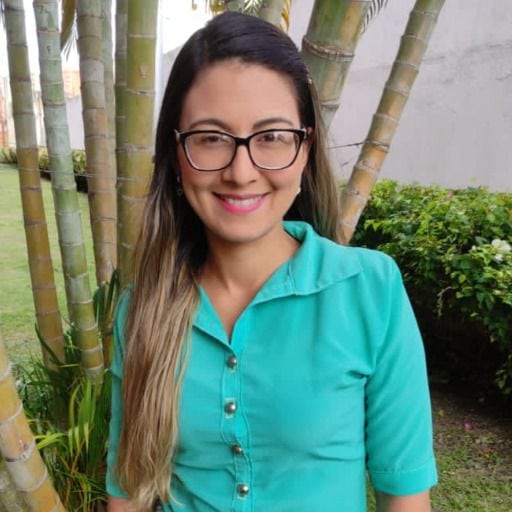
I am a professional health and nutrition writer with extensive experience in the industry. My passion for sharing valuable insights on nutrition and wellness stems from over 15 years of personal training and maintaining a healthy lifestyle. My commitment to continuously educate myself on the latest trends and research in the field allows me to deliver high-quality content that is informative and engaging. My mission is to empower individuals to make informed decisions about their health and well-being through my writing.
